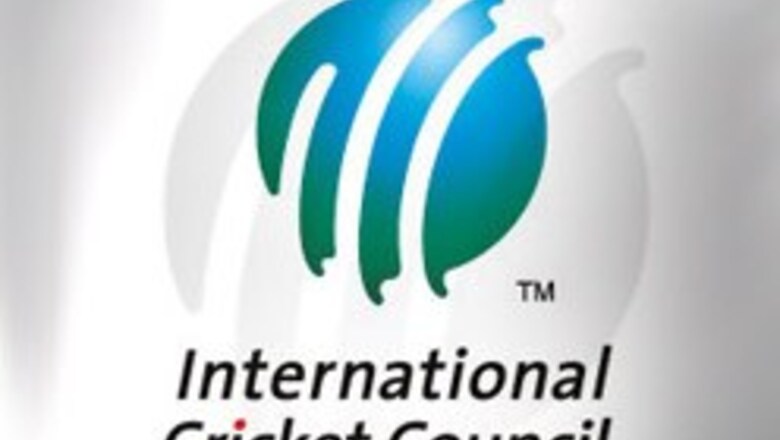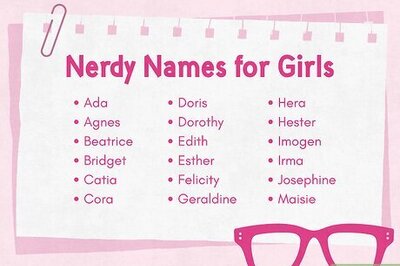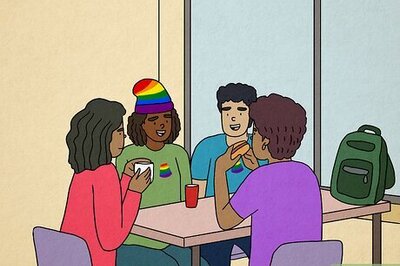
views
Dubai: The International Cricket Council agreed on Saturday to players' making a limited number of appeals to the third umpire in case of difference of opinion with the on-field umpire during the ICC Champions Trophy in India, in spite of having its reservations.
The ICC Cricket Committee decided at its two-day meeting to first implement the recommendation on trial basis in the October-November tournament and review it after the event.
"Each team will be allowed three appeals to the third umpire per innings. If the appeal is successful they will retain the right to three appeals but if not, then it is lost," ICC General Manager David Richardson said.
The recommendation was, however, made by the narrowest possible margin (six votes to five) with reservations expressed over the fabric of the game and the role and authority of the on-field umpire.
The Committee also recommended that the equipping umpires with earpieces connected to the stump microphones be mandatory in all international matches.
"The main point of the trial would be to see how much this use of technology may impact on the spirit of cricket," said Richardson.
The recommendations made by the ICC Cricket Committee have to be approved by the Chief Executives' Committee and if that approval is forthcoming then the decisions can be approved at the ICC Board meeting, with both meetings set for London in July.
The trial would not include the use of technology such as Hawkeye or the Snickometer but would include the LBW mat, the super-imposed line on the screen between the two sets of stumps to determine where the ball pitches and the point of impact on the batsman's pads.
"What we hope the trial will do, if approved, is to help eradicate the very few obvious errors that may be made by umpires, who already get between 94 and 96 per cent of decisions right at international level," Richardson said.
PAGE_BREAK
ICC Chief Executive Officer Malcolm Speed said: "Ever since the ICC Champions Trophy of 2002, the ICC has been keen to explore the possibilities offered by technology.
"What we have consistently sought to do is to increase the already-high numbers of correct decisions made by umpires while, at the same time, not diminishing their on-field role and authority," he said.
"This measure has the potential to do that but, at the same time, the Committee was mindful of the possible downside with its implications to the spirit of cricket, the fabric of the game and the authority of the on-field umpires," he added.
"However, if the recommendation is approved it will offer the chance to see how the concept works in practice and leave us better able to make a decision on its long term merits."
Explaining the working of the new appeal system, Richardson said: "Only the captain from the fielding side will be entitled to make the appeal by approaching the on-field umpire making the sign of a TV with his hands.
"For the batting side, only the batsman involved in the decision would be able to make the appeal, which he would do in the same way," he said.
The Committee also sought to establish new standardised criteria for the measurement of bad light, and a sub-committee appointed last year reported back on the Laws governing the make of a cricket bat.
It was decided to recommend that the use of artificial lights during Test matches be discontinued and at the same time, agreed that umpires should be issued with a directive that play should be maximised wherever possible.
It was also agreed that light meters should be utilised to a greater degree to establish a benchmark of what constitutes unacceptable light.
PAGE_BREAK
The Committee also recommended that the current field restrictions that apply to ODI cricket (Power plays) should remain in place unto the ICC Cricket World Cup and be reviewed after that event.
It was recommended that in "dead" Test matches, where a result was not possible, stumps could be drawn after 75 overs on the final day or at the commencement of the final hour, whichever was later.
On the 'Law governing the bat', it said the balance that exists between a wooden bat and a leather ball should be retained.
It should be made of a single piece of wood. The sub-committee should investigate the issues of “corking” and bat covers further. Bats should be the colour of wood except for permitted logos.


















Comments
0 comment